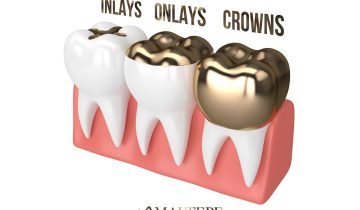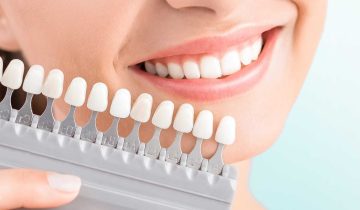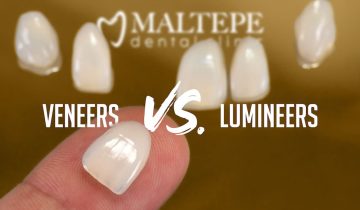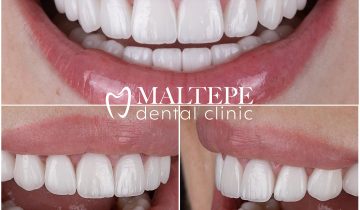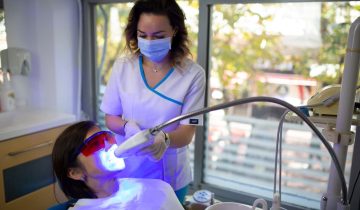Last updated on August 25th, 2023
Patients with cavities seek the best treatment for their situation, but they often find themselves at a crossroads: Inlays and Onlays vs. Crowns.
Fortunately, there are a growing number of treatment options for a variety of dental problems now. Although this is essentially great news, it might be a little overwhelming when it comes to choosing the best dental treatment for your problem.
Tooth cavities are a common dental problem, and dental fillings are usually the most immediate treatment choice, especially in the early stages. However, if decays are larger, filling may not work as desired. Thus, dentists tend to apply inlays and onlays or crowns. Both patients and dental professionals have to come to a point where they need to compare the benefits of Inlays and Onlays vs. Crowns. Not surprisingly, dental professionals have a vast wealth of experience and expertise, and thus, they are more capable of determining the pros and cons of each choice for a patient. Alas, patients normally lack the knowledge and understanding of those potential treatment options.
In this post, we will explain many details about Inlays and Onlays vs. Crowns to give you a broader understanding of each treatment by contrasting them using clear explanations, tables, and examples.
Note that the information given in this post aims to help you understand Inlays and Onlays vs. Crowns from a general perspective. If you are getting a particular dental treatment, you are strongly advised to discuss your case with a professional.
Understanding The Differences Between Inlays And Onlays And Crowns
Both inlays/onlays and crowns are effective dental treatments that aim to restore teeth that have decay. However, understanding how they work can help you have a more educated discussion with your dentist about your treatment plan.
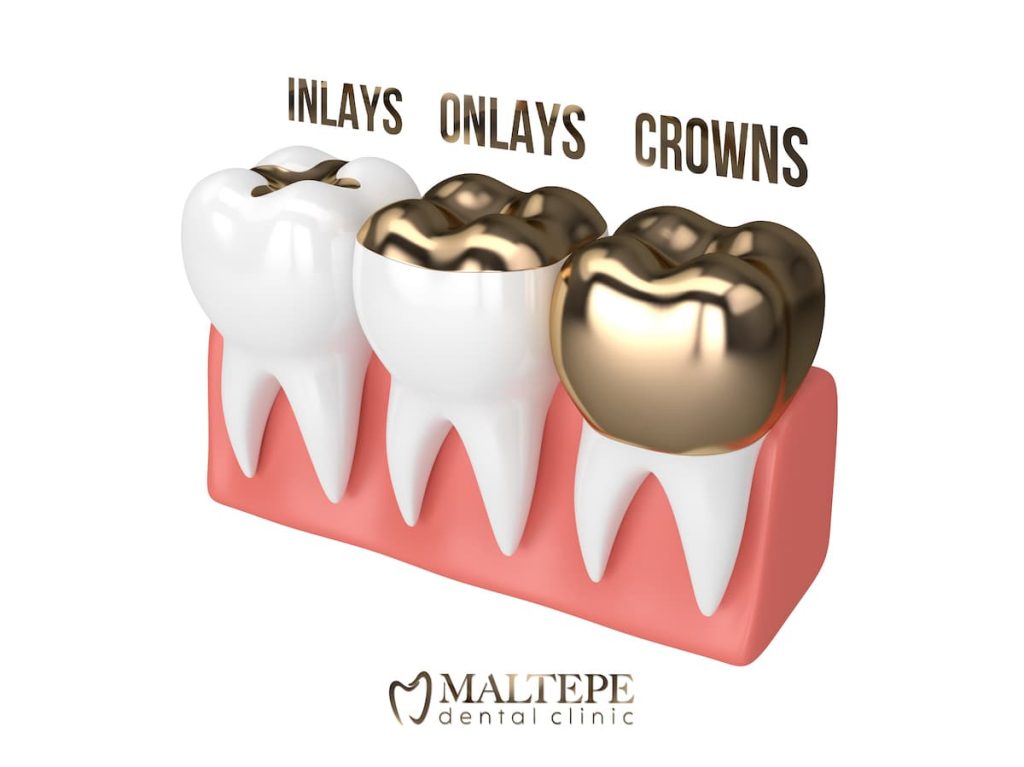
To begin with, inlays and onlays are dental restorations aiming to cover cavities that are too large to cover with a dental filling. They are usually made of porcelain or composite materials. Due to the large area that they cover on a tooth surface, as well as the crown-like application process, inlays and onlays are often called partial crowns. Inlays are placed on the cusps of the teeth while onlays are fixed onto the chewing surface of the teeth.
Dental crowns, on the other hand, are more than just a repair, they are more of a tooth replacement. The decay is removed and cleaned, then a cap (crown) is placed on the tooth. The entire tooth structure above the gum line is protected by a crown so that no natural tooth is exposed after the treatment. You can find crowns made of various materials such as metals, zirconium porcelain, ceramic, or resin.
If we compare Inlays and Onlays vs. Crowns, the basic difference is the area they cover on the tooth. Inlays and onlays cover a part of a tooth while crowns cover the whole tooth above the gum line. As you can understand, crowns are used for more severe cavities or decays compared to inlays and onlays. Both treatments can be prepared in the same dental lab using the desired dental cement.
Benefits And Limitations Of Inlays And Onlays And Crowns
Patients come with cavities at various stages of severity. Most of the time, the extent of the damage is the determining factor in deciding the right treatment to go with. Depending on the size of the decayed area and the extent of severity, dentists may perform one of two treatments: dental crowns or inlays/onlays.
Here is a practical table for you to get a better idea of the advantages and disadvantages of each treatment.
| Dental Crown | Inlay/Onlay | |
| Pros | Provides durable treatment with durable materials. Repairs largely decayed or filled teeth. Protects damaged or decayed teeth from further damage. Dentists can preserve or improve the natural tooth shape. Provides integrity after a root canal treatment. | Provides durable treatment with durable materials. Repairs a smaller area compared to a crown. Restores the natural appearance of the tooth. A more conservative procedure that preserves the healthy tooth structure. |
| Cons | The procedure is more extensive compared to onlays. Requires two or more visits to the dentist. A relatively expensive treatment. More prone to chipping or breaking. May require more extensive tooth preparation | Prone to chips or cracks, and further repair might be needed. Requires two or more visits to the dentist. It can be a more challenging procedure for a dentist. |
When Inlays And Onlays Are The Best Choices For Restoring Your Teeth?
Inlays or onlays are recommended for moderate-level tooth decay. In other words, if the decay is too large to repair with a filling, the majority of the tooth is still healthy and is worth keeping in its original form. In such cases, dentists simply clean the area and apply the inlay or onlay depending on the position of the cavities.
You can still discuss other details with your dentist such as the material type, potential complications such as allergies or sensitivity, aftercare routine, or the cost of the treatment. Normally, an inlay or onlay lasts for 20-30 years with the proper care and oral hygiene.
When Full Crowns Are The Best Choice For Restoring Your Teeth?
Crowns are another treatment option to restore a damaged tooth. It is recommended when the tooth is severely decayed, cracked, or somehow damaged with almost no healthy part remaining. Crowns can also preserve the integrity of the cracked parts of a tooth. The aim is to restore the shape and form of the tooth. However, the affected area is typically larger than an inlay or onlay.
Similar to inlays and onlays, you can find crowns made from different materials. Zirconia crowns, for example, can last for about 20 years with proper dental care.
Factors To Consider When Choosing Between Inlays And Onlays And Crowns
Thinking of Inlays and Onlays vs. Crowns, patients might have different considerations. Of all those concerns, “how each of these treatments performs” can be the most critical one for the majority of patients. A recent study, published in Head & Face Medicine in 2022, revealed that tooth-colored onlays perform as well as full crowns in the posterior of the mouth after over 1 year of observation. Although longer-term follow-up studies are still needed, we can conclude that both inlays/onlays and crowns perform well, particularly in the posterior teeth.
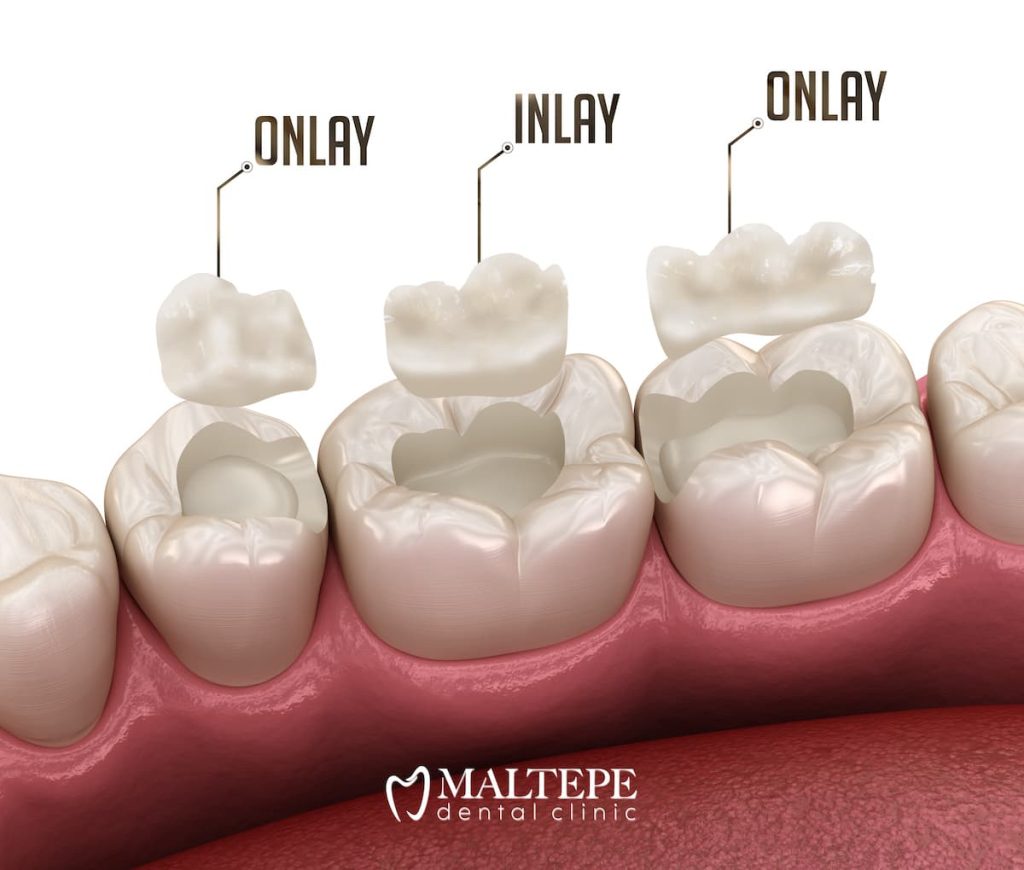
It is worth mentioning that the factors to consider in Inlays and Onlays vs. Crowns are not limited to the initial performance of these treatments. Price is another important issue for many patients. If you are concerned with the financial aspect of the treatment, inlays, and onlays can be a better option for you. Note that the exact prices are subject to change depending on factors such as material types or other dental treatments you receive at the same time. For instance, composite inlays and onlays are more affordable than ceramic inlays and onlays or crowns.
Note that your dentist will assess the severity of your case and recommend you the best treatment option. Therefore, you should consider your dentist’s recommendation before other factors and considerations. In fact, complying with minimal invasive dentistry, dental professionals have a tendency to choose the least invasive treatment technique. So, if a decayed tooth can be restored using inlays and onlays, they just do that, and avoid dental crowns, which is a relatively more invasive treatment.
Caring For Your Inlays And Onlays Or Crowns
Both inlays/onlays and dental crowns require similar aftercare routines. Moreover, those practices should not be much different from what you would do for your natural teeth. Yes, brushing and flossing regularly are the two most important principles of maintaining your teeth.
Additionally, patients having had an inlay/onlay or crown treatment should avoid chewing on hard or sticky foods. They can damage or dislodge the restoration. Also, extremely hot and cold drinks might trigger tooth sensitivity, especially in the early days of treatment.

